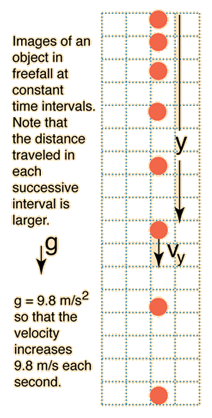
The integration of this expression for a contraction from r 0 to zero to find the freefall time is a rather detailed process. How do you calculate impact velocity To calculate impact velocity use the formula V (2gh), where h is the height, and g is the gravitational acceleration.
Freefall time calculator free#
The velocity expression from applying conservation of energy to the freefall time problem is To calculate free fall velocity use the formula V v + gt, where v is the initial velocity, t is the time of fall and g is the gravitational acceleration. Nevertheless, the freefall time is a useful parameter for modeling certain processes. Realistic star formation modeling must take into account collisions, pressure, temperature, radiation and other variables. This is not going to happen, but such modeling is nontheless useful to give insight into the brief time intervals associated with the collapse of the inner portions of stars, which may lead to supernova events. If the calculation is done with the solar parameters, you find that if all outward pressures and interactions were removed, the Sun would completely collapse in just under 30 minutes. The calculated freefall time is t ff = x s The initial density is ρ 0 = kg/m 3ρ 0 = x 10^ kg/m 3 Example calculations for the velocity of a free-falling object after six and eight seconds are shown below. Integration of this expression to find the time to collapse to zero radius gives the freefall time expression. You can also in this context invoke conservation of energy so that the kinetic energy gained by the mass element m is equal to the change in gravitational potential energy. The dynamics of the contracting matter can then be described by Newton's second law. This velocity calculator uses the equation that the final velocity of an object is equal to its initial velocity added to its acceleration multiplied by time of. It is further assumed that there are no interactions between the particles other than gravity - i.e., no collisions or effective outward pressure. This follows from Gauss's law for the central, inverse square law force of gravity. Starting with a simple model of a uniform spherical gas cloud, an element of mass m at the radius would experience a gravitational attraction as if the entire mass M were concentrated at the center. One step along the way to a realistic model is to calculate the freefall time. One of the classic problems of astronomy is the modeling of the gravitational contraction of a diffuse cloud of gas and dust to form a star.


Stellar Lifetimes Freefall Time and Star Formation Time


 0 kommentar(er)
0 kommentar(er)
